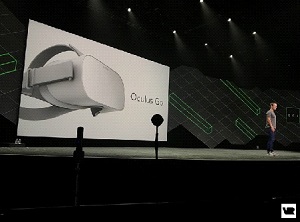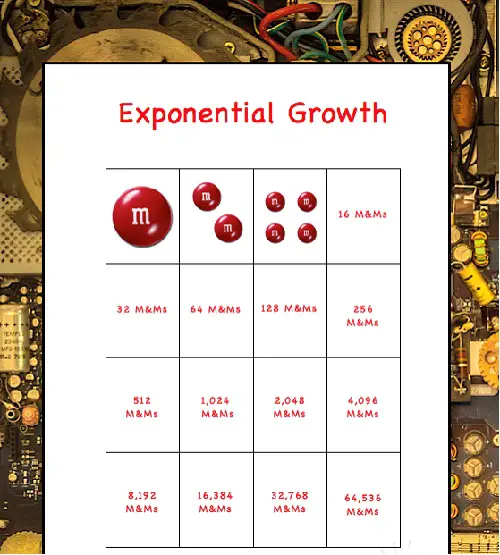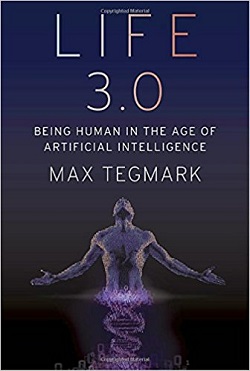|
TRANSLATE THIS ARTICLE
Integral World: Exploring Theories of Everything
An independent forum for a critical discussion of the integral philosophy of Ken Wilber
 David Christopher Lane, Ph.D.
Professor of Philosophy, Mt. San Antonio College Lecturer in Religious Studies, California State University, Long Beach Author of Exposing Cults: When the Skeptical Mind Confronts the Mystical (New York and London: Garland Publishers, 1994) and The Radhasoami Tradition: A Critical History of Guru Succession (New York and London: Garland Publishers, 1992). David Christopher Lane, Ph.D.
Professor of Philosophy, Mt. San Antonio College Lecturer in Religious Studies, California State University, Long Beach Author of Exposing Cults: When the Skeptical Mind Confronts the Mystical (New York and London: Garland Publishers, 1994) and The Radhasoami Tradition: A Critical History of Guru Succession (New York and London: Garland Publishers, 1992).SEE MORE ESSAYS WRITTEN BY DAVID LANE The Greatest Virtual Reality Headset in the UniverseExploring where Digital Technology and A.I. is HeadingDavid Lane
Our future is virtual and fight and resist as much as we want, the digital landscape is going to consume us.
This past week I attended the 4th annual Oculus Connect Conference in San Jose. It was primarily designed for game developers and programmers to get the latest information about the future of Virtual Reality. There was much discussion about the newest iteration of portable VR headsets, which are not tethered to high-end computers, such as Oculus Go (coming out shortly) and Santa Cruz, the eventual, albeit a year or so delayed, successor to Oculus Rift. My oldest son, Shaun, is fully immersed in VR, since he competes nationally in two popular E-sports, Unspoken and Echo Arena, where participants meet in virtual spaces and engage in strategic gaming.  After listening to the impassioned keynote talk by Mark Zuckerberg, the founder of Facebook, wanting to have 1 billion people worldwide experience VR, it got me thinking about the future of digital technology and where Artificial Intelligence is heading. 
First things first, however: the absolute best Virtual Reality headset has already been made and it weighs but 3 pounds and every human being already owns one—it is our brain. While we may not think of our cerebral cortex as such, the fact remains that our brain virtually simulates the reality we experience moment to moment. It is the great transducer, transforming electromagnetic waves of energy into vivid bits of colorful, tactile, and auditory forms of information. We do not see our external world unencumbered, but as our bodily apparatus algorithmically “filters” and “transforms” it, using as its mechanism the various apertures of our body, from our eyes to our ears to our mouths to our noses. And within our skulls we live in universes that our glorious wonder tissue manufactures, convincing us that our user interface is a transparency to our surrounding environment. Yet, even though my brain can conjure up all sorts of fantastic vistas (especially when dreaming and not being constrained by incoming data streams), it is severely constrained while in the waking state. This is because much of what we experience in the world is generated by rearranged atoms and given the law of physics we tend to be bounded by such limits. For instance, if I want to experience Paris, France, but live in Los Angeles, California, I have to spend a good sum of money and take a jet for ten hours to do so. Yes, I can read a book about the romantic city or watch a film, but that can only lead me so far. I can definitely imagine what it would be like to go inside the Notre Dame cathedral, but it will be lacking many pertinent details and will be missing that all important ingredient, the feeling of “being there,” what is commonly referred to by VR developers as “presence.” This is perhaps why computer engineers are so intrigued and beguiled by Virtual Reality mechanics, since it can trick our brains into feeling like “we are really there”—whether it be surfing in Tahiti, or rock climbing El Capitan, or being in the middle of a basketball game and having LeBron James slam dunk a ball right over your head as you try to defend against him. In the cosmos of atoms Newtonian laws of position and momentum restrain us, the inhabitants of middle lands. It is one thing to imagine creating a Disneyland theme park, quite another to actually brick by brick build one. But in a galaxy of informational bits, there are no restrictions and it is for this reason that VR is considered so promising and so enchanting. I, myself, wouldn't have believed this back in the 1990s when I first donned on a VR headset since as I mentioned in a previous article, The Avatar Project, I thought Virtual Reality sucked since it was so rudimentary and off-putting to be almost laughably bad. But today that has all changed, since the technology behind VR has advanced so much that one can actually feel teleported into different regions and be convinced that what is happening around you (even if digitally created) is truly happening. For instance, my wife Andrea was completely shocked when she donned on the Oculus Rift headset and traveled in her avataric costume to a remote cliff only to find another person from Illinois (using the same VR system) sitting right beside her trying to strike up a conversation. What scared her was precisely what makes VR so powerful—it seemed real. While it is certainly true that Virtual Reality is still in its infancy, it doesn't stretch our credulity to envision how transformative it will be in five to ten years hence. The Matrix-like implications are immense, particularly when VR is coupled with how fast Artificial Intelligence is evolving. It is little wonder (even if still contentious), therefore, why Elon Musk, founder of Tesla and Space X, is firmly convinced that we are not living in base reality, but a computational simulation engineered by an advanced species. What used to be only in the province of science fiction is now being actualized on an almost weekly basis. One doesn't have to accept Ray Kurzweil's Singularity or Nick Bostrom's Superintelligence hypothesis to realize that the digital future that awaits us is an altogether different beast than we can accurately imagine. Here some context may be helpful. In the late 1960s after Stanley Kubrick's movie, 2001: A Space Odyssey was released, my father Warren, a highly educated lawyer well trained in mathematics and the sciences, categorically told me that a computer, no matter how advanced, will ever beat a Grand Master in chess. Well, my father was wrong. Just three decades later, the premier chess master in the world, Gary Kasparov, was beaten by an IBM computer poetically named Deep Blue. This past year, AlphaGo, a sophisticated computer program, developed by Google's Deep Mind, beat 18 time world champion, Lee Sedol, at the extraordinarily complex game, Go, an unexpected outcome since many scientists predicted it would take another five or ten years for a computer to achieve such mastery. But the most shocking news to rock the A.I. community happened this past week when it was announced that a new version of AlphaGo Zero beat its predecessor in head to head Go competition a mind boggling 100 to 0. As the Guardian explains, “Google's artificial intelligence group, DeepMind, has unveiled the latest incarnation of its Go-playing program, AlphaGo—an AI so powerful that it derived thousands of years of human knowledge of the game before inventing better moves of its own, all in the space of three days. Named AlphaGo Zero, the AI program has been hailed as a major advance because it mastered the ancient Chinese board game from scratch, and with no human help beyond being told the rules. In games against the 2015 version, which famously beat Lee Sedol, the South Korean grandmaster, in the following year, AlphaGo Zero won 100 to 0. The implications of this development cannot be understated since the law of accelerating returns allows Synthetic Intelligence to grow at an exponential rate. One of the ways to envision how this law works is to imagine placing a piece of candy (let's use one M&M for our example) and placing it on the first square of a game board that has 15 other squares. Now for each square after the first you double the amount of M&M's. What is astounding is how quickly the amount of M&M's increase. At 16 squares you have 64,536 pieces of candy. Now if you have 300 spaces and are doing the same doubling on each square the number of M&M's is beyond imagination at: 2 novemvigintillion 37 octovigintillion 35 septenvigintillion 976 sexvigintillion 334 quinvigintillion 486 quattuorvigintillion 86 trevigintillion 268 duovigintillion 445 unvigintillion 688 vigintillion 409 novemdecillion 378 octodecillion 161 septendecillion 51 sexdecillion 468 quindecillion 393 quattuordecillion 665 tredecillion 936 duodecillion 250 undecillion 636 decillion 140 nonillion 449 octillion 354 septillion 381 sextillion 299 quintillion 763 quadrillion 336 trillion 706 billion 183 million 397 thousand 376.[1]  Or, put another way, by the time you have reached the 300th square you could replace every atom in the universe with a piece of M&M candy! What this means when applied to technology is obvious, since every year (if not months) digital devices get more powerful and cheaper. The smart phone in our pocket is a 1000 times more capable than all the NASA computers that got the first man on the moon back in 1969. When this type of A.I. is married to digital gadgets such as VR, the possibilities are quite literally mind blowing and unlimited. No wonder Elon Musk and others believe that we live in an illusory reconstruction, despite recent quantum experiments that suggest otherwise. The ironic twist in our rapid development of all things virtual is that we are outsourcing what before we could only in-source. In sum, we are creating the digital means by which we can live out what we could only before dream and fantasize about. But in developing smart machines that produce such synthetic architecture, we run the very real risk of having artificial architects with goals that don't align with our own. There was not much discussion at the Oculus 4 Conference on the dangers of A.I. being coupled with VR, primarily because these are early days for this new fangled technology. But given what Alpha Go has been able to accomplish in such a short period of time, it gives one pause since we may be on the threshold of advancing algorithms that are far beyond our ability to either understand or control them. As David Meyer for Fortune Magazine opined, “While it sounds like some sort of soda, AlphaGo Zero may represent as much of a breakthrough as its predecessor, since it could presage the development of algorithms with skills that humans do not have.” 
Those very last eight words “algorithms with skills that humans do not have” should give us a deep pause, if not a ponderous shudder. As Yuval Noah Harari warns in his review of MIT Professor Max Tegmark's latest book, Life 3.0, “If you hear a scenario about the world in 2050 and it sounds like science fiction, it is probably wrong; but if you hear a scenario about the world in 2050 and it does not sound like science fiction, it is certainlywrong.” Finally, what impressed me most at the Oculus 4 Conference wasn't about VR headsets but human ingenuity and our ability to draft a future the likes of which we cannot accurately predict. We don't really like the world we were born into, and thus have tried to alter it in myriad ways. The threshold before us now is a dividing line, since we have evolved from slowly moving atoms with our multifarious tools to moving bits at the speed of light. Are we the progenitors of a new kind of species, a new kind of intelligence, which will supersede our cranial capacities to understand their own self-made trajectories? Our own personal VR headsets—our brains—have enabled us to construct synthetic devices that can digitally actualize what we could only before imagine. But did we ever dream that our hallucinogenic reveries would assume avataric garb and evolve independently from us? Of course, the skeptics amongst us may argue that we can simply unplug the electronic brain and never be scared of a Matrix-like scenario where we humans get imprisoned by a holographic wonderland while at the same time being parasitically juiced for our humanoid energies. Yet, aren't we already there to some measure, addicted as we are to our flickering screens that we obsessively consult minute by minute for the latest informational hit? What happens when we fuse our brains with VR and AI? Are we birthing a new kind of species or a new kind of cyborg? I remember in a not so distant past when nobody had a smart phone. Do we really think we are going to reverse course and become Techno Luddities in our revolt against the Grid? I think not. Our future is virtual and fight and resist as much as we want, the digital landscape is going to consume us. This isn't a prophecy, as it has already happened. We just didn't realize how quick the transition would be. Notes[1] Alternative notations of this large number:
|